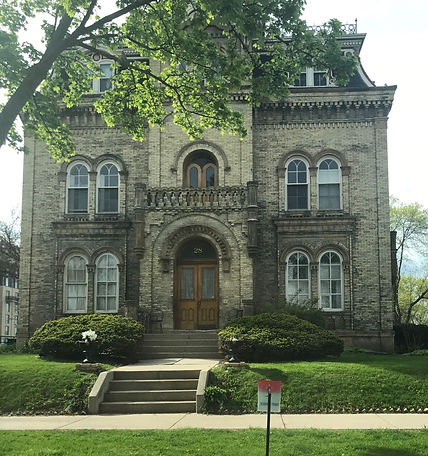28 E Gilman Street-1857
As Madison began to grow into a larger city rather than a village, it attracted wealthy and important people to move to the area. Today the area with this house is know as the Mansion Hill District, (Madison's first historical district as of 1976.) Walking through this area you can spy a plethora of Italianate, Gothic Revival, Queen Anne, and Second Empire homes like the one to the right. This particular second empire home was built in 1857 for Napoleon Bonaparte Van Slyke, the first cashier of the Dane County Bank. I think this massive house makes sense to be built for a successful banker in this time period being so close to the downtown of the city in the capital of Wisconsin, where banking would take place. This house was later sold to a business partner of Van Slyke, following that was a wealthy mill owner from New York, and after that a well-known surgeon and his wife. The Sanborn map from 1805 below shows that not only is this house very close to the capitol but Gilman Street further down connects to State Street, which then and today is a popular shopping and eating venue for many, which we will look at later. Thinking about this house being built among other impressive houses shows the growth of Madison as a city and the opportunity for economic prosperity for many in the community during this time.
614 E Gorham-1863
The next stop on our tour is James Madison Park. This area was originally blocked as a park because at the time, city planners thought this would later become a canal for water transport. They instead used it as a port for the steam engine yacht that traveled Lake Mendota. One thing Madison is famous for is its lakes. Sitting on an isthmus, Madison is surrounded by Lake Mendota and Lake Monona. Today these lakes are used for fishing, recreation, and add value to the numerous lakefront properties in the area. In the time of the founding of this park though, the lakes were helpful in Madison's growth due to the fact that steam engined boats were a main technological innovation cities like Chicago and Cincinnati among others relied on. I think it is important that this space has remained a public green space today allowing everyone access to one of Madison's great natural features.
1850's- The Original Growth





